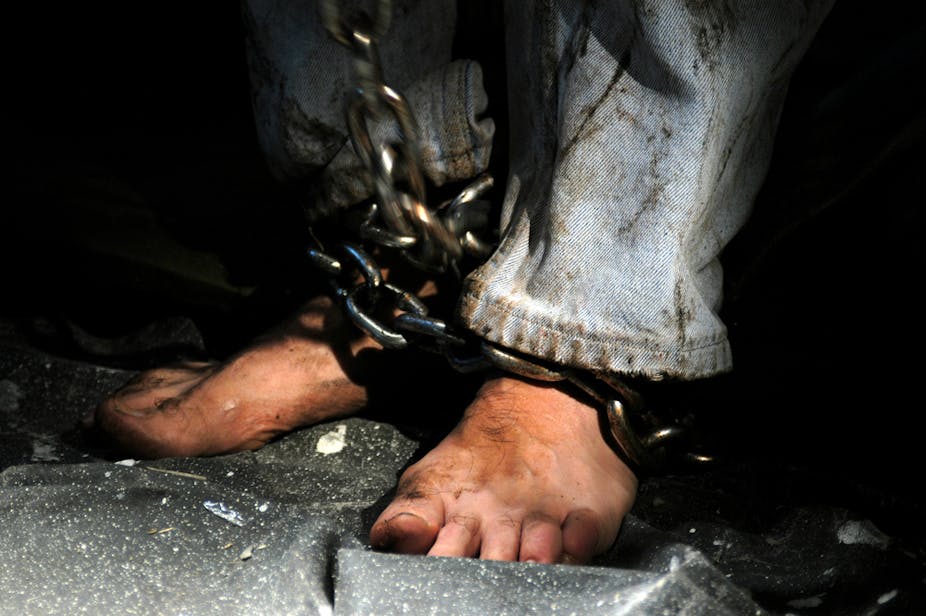Forensic pathologists are used to dealing with death and injury. In reality, without violence our career wouldn’t exist. It’s our stock in trade, our raison d’etre. We are experts (in the legal sense) in interpreting injuries and injury patterns, be that in the dead or the living.
It was on that basis that I was asked to join a group to assess claims of human rights abuses on a massive scale in Syria. There was to be a two-pronged investigation: three experienced international lawyers – Desmond de Silva QC, Geoffrey Nice QC, and David Crane – would assess the witness who alleged he had obtained images depicting torture and murder while I (later with the expertise of Sue Black) would assess the images.
Quite simply, if the witness wasn’t credible, or the images were unclear or faked, the account wouldn’t stand up to scrutiny. After all, what sort of regime would photograph and document the results of the torture and murder of thousands of people? My crash course in genocide informed me that it’s actually quite common (the Khymer Rouge in Cambodia documented victims in the 1970s).
Along with the team we started looking at the photos. They looked very, very real. I have advised on TV and movies and I know how difficult it is to make fake injuries look convincing and the man-hours it takes to do the make-up and prosthetics. In my first skim of the Syria images I saw photographs of more than 300 people who appeared starved, beaten and shackled. All of them looked convincing and none looked staged.
Our evidence, of industrial-scale killing by the Syrian regime – the systematic torture and execution of 11,000 detainees – was big news and we presented our findings to the UN Security Council.
But of course news doesn’t last forever, and something more important soon took over.
Staying professional
As an expert I’m used to speaking in a court where the prosecution want to prove a case and the defence want to raise doubt. In that sense it’s simple. I may not understand why I’m being asked a certain question, but I know where the battle lines are drawn.
Human rights abuses on a large scale are a different issue. Taking the example of the Assad regime, there are countries that politically support the regime, others that oppose it. Possibly a matter of ideology, possibly as part of a massive global chess game. I don’t know and I don’t pretend to. I could no more explain global political manoeuvring than explain quantum mechanics to a badger. Even as I write, the ramifications of the rise of Islamic State makes the situation in Syria all the more complex and it may be that yesterday’s enemies become today’s uncomfortable bedfellows.

All of which, I respectfully suggest, is irrelevant to me. It’s for the politicians and diplomats to do what they will with the information and opinions I provide. They must choose to act upon it or otherwise in the context of their own agenda and aims. But if it is my independent expert opinion that someone was beaten, starved, and murdered, then that is what I must say.
Looking at violence
Which brings me to the question I’ve been asked most about my experience: how was I able to deal with seeing so much violent death in such a short period of time? There are several answers to this. My initial response was that I’d been so busy actually doing the work that I didn’t have time to think about how it may have affected me.
Now time has passed, I’ve had the opportunity to reflect upon what I saw. I think that it doesn’t matter whether I’m dealing with a single stab wound in a drunken brawl or an allegation of mass murder. I’m obliged to say things as I see them and that’s all. My responsibility is to be honest on behalf of the deceased. Ultimately, each of those bodies was a person, and has a right to be spoken for. Just saying “thousands of dead” has little emotional resonance. It’s a big number and makes headlines, but I can’t actually visualise thousands of bodies lined up.
Maybe thinking of them all as individuals should mean it all affects me more, but I take the view that my job is to deal with violent death, however many people are involved.
So there we are. I did what I could to highlight what I believe is a terrible situation. It’s in the public domain and with the people who have the power to act. In five years it may be that nothing happens regarding the claims we investigated, but I can rest comfortably knowing that whatever the international community chooses to do, they can’t claim not to have been told.

